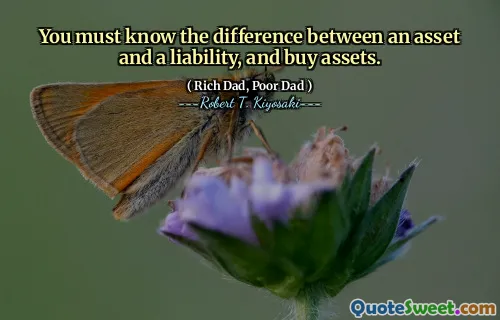
You must know the difference between an asset and a liability, and buy assets.
Understanding the fundamental difference between an asset and a liability is essential for financial growth and stability. An asset is something that puts money in your pocket; it generates income or appreciates in value over time. Conversely, a liability takes money out of your pocket, representing expenses or depreciating assets. Recognizing this distinction helps individuals make smarter investment decisions, prioritizing the acquisition of assets that build wealth rather than liabilities that drain resources.
By focusing on buying assets—such as real estate investments, stocks, or business ventures—you create streams of passive income that can eventually lead to financial independence. This principle encourages a mindset shift; many people inadvertently accumulate liabilities like debt for depreciating possessions, cars, or expensive consumer goods, which hinder their financial progress. Building wealth requires deliberate choices that increase assets and reduce liabilities.
This approach also emphasizes financial education and awareness. Knowing where your money goes and understanding investment opportunities critically influence your financial journey. It involves assessing risk, forecasting returns, and maintaining discipline to invest in assets that align with your long-term goals. The wisdom in this quote promotes a proactive approach—thinking like an investor rather than a consumer.
Ultimately, the mastery of distinguishing between assets and liabilities enables one to craft strategies that leverage assets for growth, which translates into increased financial security and freedom. Cultivating this knowledge transforms a passive approach to money into an active process of wealth building, reinforcing the importance of continuous financial learning.
---book: (Rich Dad, Poor Dad)--- author: '---Robert T. Kiyosaki---'






